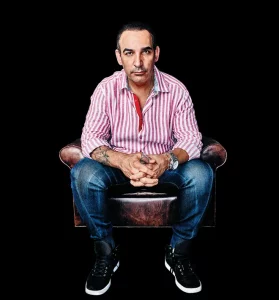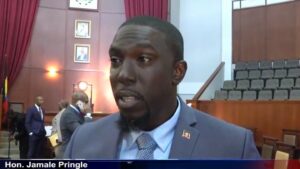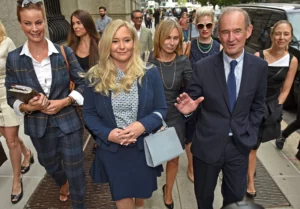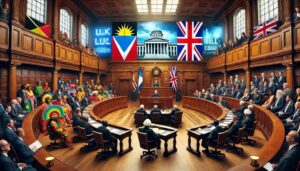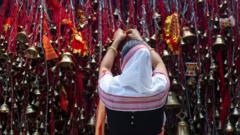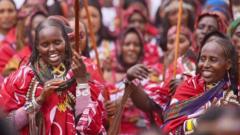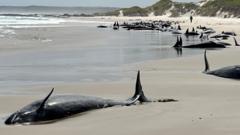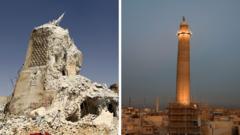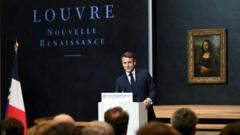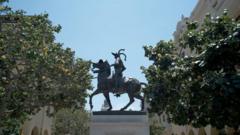Long-standing culinary disagreements reflect broader concerns about cultural identity in Antigua and Barbuda.
**Raisin Controversy: A Culinary Division in Antigua and Barbuda**
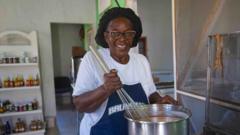
**Raisin Controversy: A Culinary Division in Antigua and Barbuda**
Debate over whether raisins belong in the island's cherished 'ducana' reveals cultural heritage preservation efforts.
Antigua and Barbuda face a surprising cultural quandary that has lingered for decades: the debate over the presence of raisins in “ducana,” a traditional sweet potato and coconut dumpling. Local residents passionately defend their culinary preferences as the island nation seeks to preserve its cultural heritage through a nationwide inventory. This inventory, funded by UNESCO, aims to document vital aspects of Antiguan identity, including traditional dishes, dialects, crafts, and communal practices, amidst apprehensions of diminishing cultural transmission.
Project leader Dr. Hazra Medica elucidates the urgency of the initiative, emphasizing the decline in traditional knowledge transfer between generations. "Without that, we start to lose the sense of who we are,” she warns, addressing concerns that outside influences threaten indigenous traditions. A team of trained data gatherers is now busy collecting stories, photographs, and other forms of cultural data from residents in various parishes, which will be stored in a publicly accessible database.
Meanwhile, local author Joy Lawrence, whose work showcases the Creole/English dialect infused with African language components, highlights the linguistic evolution of Antiguan speech following the arrival of enslaved Africans. This dialect has historically faced stigma, but Lawrence insists on its significance as a point of pride and cultural richness, despite its informal nature.
Culinary disagreements extend beyond ducana. For instance, there are ongoing debates about how to prepare "fungee," a cornmeal paste, with differing regional preferences causing lighthearted contention among communities. Dr. Medica describes the “fungee war” that emerges between residents of Antigua and Barbuda regarding recipe fidelity.
Local entrepreneur Novella Payne preserves time-honored cooking techniques learned from her family while adding personal flair to traditional recipes. She emphasizes the distinctiveness of Antiguan food, deeply rooted in local medicinal practices as well. Further on Barbuda, Dwight Benjamin strives to uphold traditional broom-making, passed down through generations. His commitment to this craft speaks to a desperate need to connect with ancestral skills in contemporary society.
Overall, Dr. Medica contextualizes the cultural preservation project within the historical complexities of colonialism and African traditions. It asserts the community's claim to cultural identity and resilience through culinary and linguistic practices. “When we talk about culture in Caribbean islands, we tend to forget the engagement with our colonial past,” she states, illuminating the essential narrative of resilience and continuity among Antiguans and Barbudans.
This project not only aims to catalog cultural practices but also fosters a deeper appreciation for the vibrant past and diversity of traditions that shape the island’s identity.
Project leader Dr. Hazra Medica elucidates the urgency of the initiative, emphasizing the decline in traditional knowledge transfer between generations. "Without that, we start to lose the sense of who we are,” she warns, addressing concerns that outside influences threaten indigenous traditions. A team of trained data gatherers is now busy collecting stories, photographs, and other forms of cultural data from residents in various parishes, which will be stored in a publicly accessible database.
Meanwhile, local author Joy Lawrence, whose work showcases the Creole/English dialect infused with African language components, highlights the linguistic evolution of Antiguan speech following the arrival of enslaved Africans. This dialect has historically faced stigma, but Lawrence insists on its significance as a point of pride and cultural richness, despite its informal nature.
Culinary disagreements extend beyond ducana. For instance, there are ongoing debates about how to prepare "fungee," a cornmeal paste, with differing regional preferences causing lighthearted contention among communities. Dr. Medica describes the “fungee war” that emerges between residents of Antigua and Barbuda regarding recipe fidelity.
Local entrepreneur Novella Payne preserves time-honored cooking techniques learned from her family while adding personal flair to traditional recipes. She emphasizes the distinctiveness of Antiguan food, deeply rooted in local medicinal practices as well. Further on Barbuda, Dwight Benjamin strives to uphold traditional broom-making, passed down through generations. His commitment to this craft speaks to a desperate need to connect with ancestral skills in contemporary society.
Overall, Dr. Medica contextualizes the cultural preservation project within the historical complexities of colonialism and African traditions. It asserts the community's claim to cultural identity and resilience through culinary and linguistic practices. “When we talk about culture in Caribbean islands, we tend to forget the engagement with our colonial past,” she states, illuminating the essential narrative of resilience and continuity among Antiguans and Barbudans.
This project not only aims to catalog cultural practices but also fosters a deeper appreciation for the vibrant past and diversity of traditions that shape the island’s identity.

